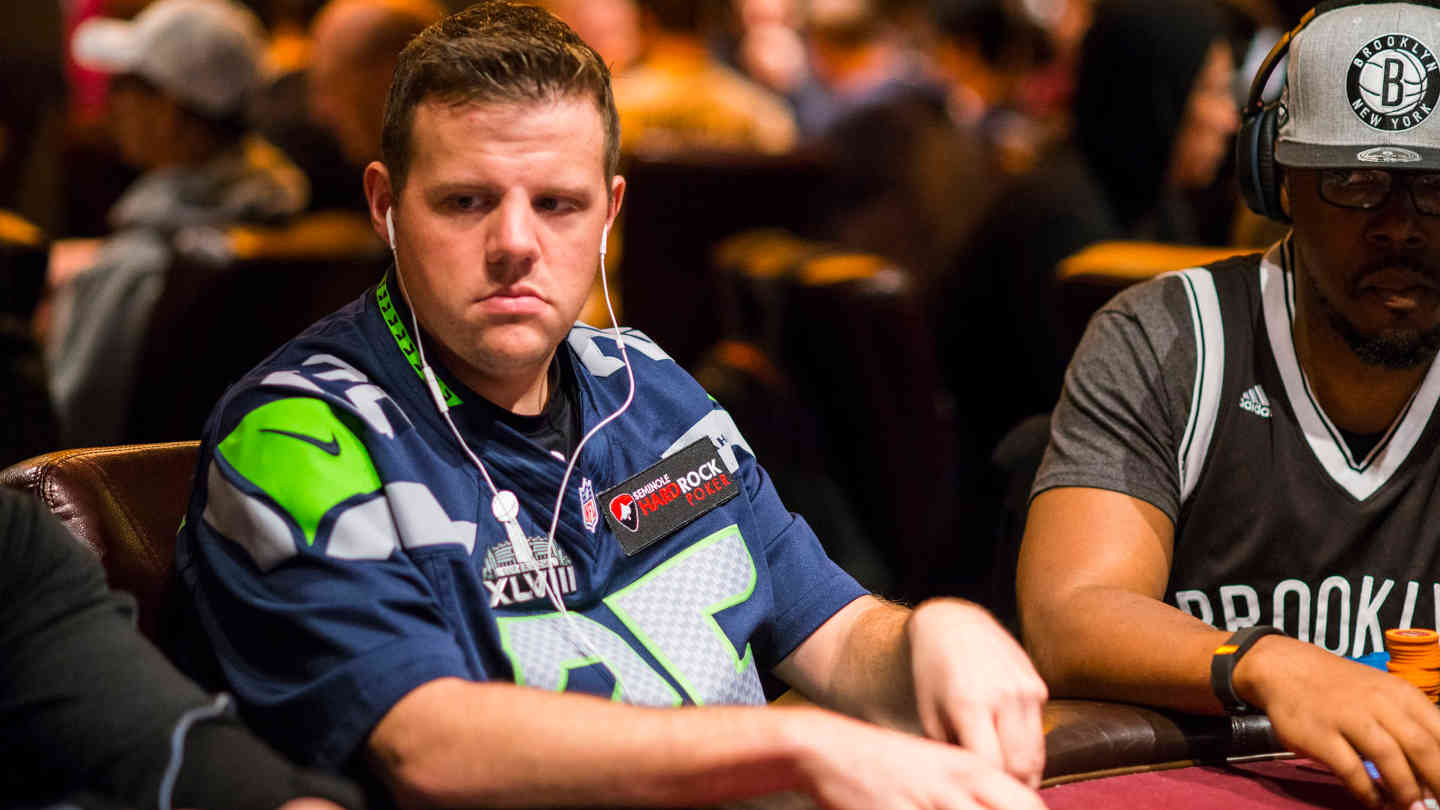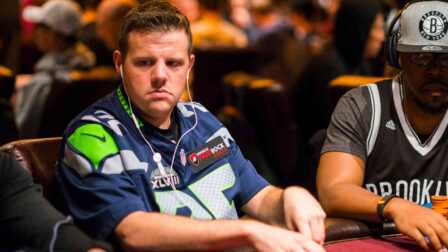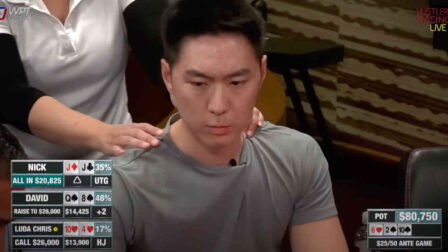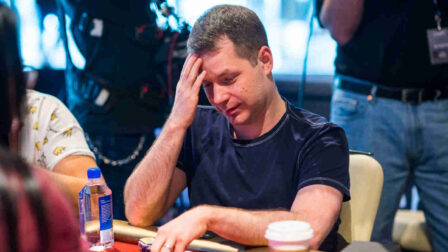Poker Bankroll Management – The Best Tips For You In 2024

15 minutes
Last Updated: March 19, 2024
Bankroll management is almost as important as learning poker rules or poker hands rankings when starting out. If you want to be a winner, this is not something you can take lightly, and understanding the most important principles will help you reach success in any poker game.
However, you have to take into consideration that you need to be a winning player to get the most out of this concept. Otherwise, bankroll management will not help you much, and you will be just bleeding money.
Before analyzing specific numbers and buy-in amounts, you should understand how to maximize your chances to succeed with proper poker bankroll management. Therefore, we will start with a few fundamental rules.
Table of content
Right poker bankroll management based on your game
It could be a big mistake to think that you can get away with the same bankroll management strategy for every poker format there is.
Of course, it is not the case, and you need different tactics depending on your game. Remember to take all the tips listed above and adjust it to your strategy for the chosen format.
Bankroll management for multi-table tournaments (MTT)

One thing, which separates this game from the rest, is the size of the field. I am not talking about the number of players sitting at the table; instead, I am referring to total participants in any given tournament.
If you are playing any other game, you will be facing the same amount of players almost all the time, and you can stick with a more fixed poker bankroll strategy.
However, it is a bit different for MTT.
For tournaments, you need to take into consideration two things:
- The size of the tournament field – how many participants there is
- Your edge over the competition – commonly known as return on investment ROI (return on investment)
To increase your win rate, I have prepared an MTT poker tournament strategy article, so do not miss this one!
I am not going to give you a magic number, which fits all situations. However, you should know that you need a very conservative bankroll management strategy for tournaments with a large field.
You are very likely not to cash in these big events for an extended period, even if you are a winning player. Hence, you can encounter huge swings. Contrary, in smaller events, you can get away with a smaller bankroll as well.
The same goes for your ROI. If you have a significant edge, you can get away with smaller poker bankroll because you will not be encountering dramatic swings and variance.
However, if you are barely beating the games with 5% ROI, better not even think about playing without 100 buy-ins, and even that is on the conservative side.
To get some realistic numbers, you can assume that competition is much weaker at lowers levels and improves when you move up, as well as your requirement for the bankroll.
Thus, you can afford to have more liberate bankroll management and stick to the 100 – 120 BIs for your average buy-in. However, as you move up the stakes, you should aim to have at least 150 average BIs to be on the safe side.
If you know that you are likely to encounter weak competition in one of the tournaments, you can enter it, even if you do not have enough money, according to the previously mentioned poker bankroll management strategy. It goes vice versa if the field is very tough.
Poker bankroll management for cash games

It is a bit easier to build a concrete bankroll management strategy for cash games because the win rate is the only thing you need to consider.
The most common stat to measure it is EV bb/100 (how many big blinds you win per hundred hands).
Therefore, you can build an effective strategy for moving up stakes.
As you see, you can be moving up faster and adopt more aggressive poker bankroll strategy if you have a significant edge over your opponents. Therefore, studying and learning the strategy should be your top priority.
Learn to analyze your game, understand the correct usage of your poker stats and get essential poker software! All of this will help you to become a better poker player and save money for what matters!
Spin & Go bankroll management
It looks like this game is booming and if you want to play it, better make sure to follow some guidelines. Otherwise, you could end up in a lot of trouble. First of all, you need to study it to gain an edge, and your first step could be reading this Spin And Go strategy article.
Remember, this is a game of small margins so better be safe than sorry. Contrary to MTT, you will always be playing against the other two players, so the field size is not a concern.
However, as with cash games, the most important factor is your ROI. Therefore, you will be basing our decision on that.
You should be aware that it is impossible to have a massive ROI in these games and even a 5% return on investment is superb.
It is a very specific format, which will require a much larger bankroll compared to others, because of the significant short-term variance you can encounter.
However, if you are beating these games you will have no problem over the long run, and your graph will be going straight up like this one from my student.
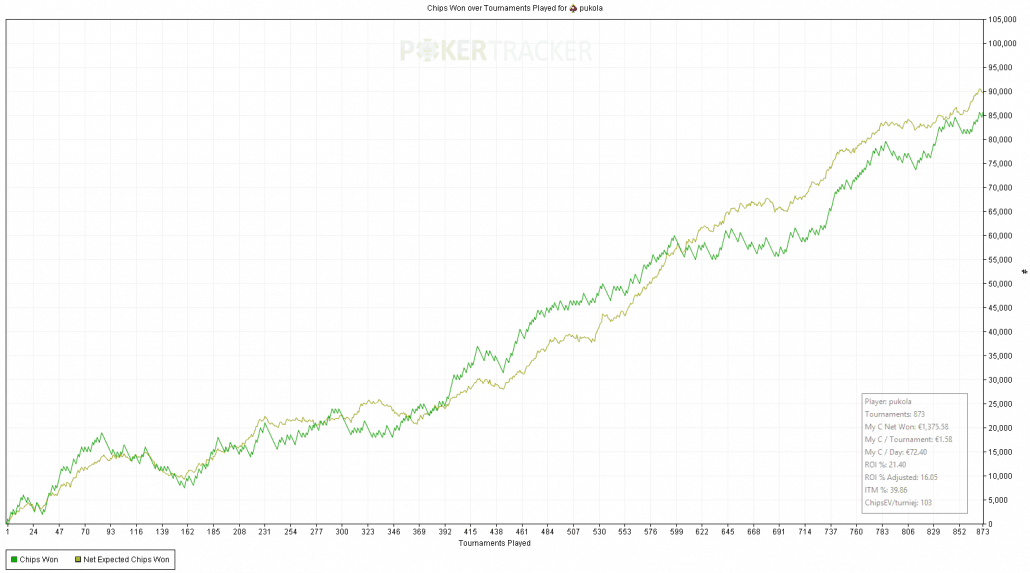
Poker Bankroll Management for Sit & Go’s
There are different types of sit & go tournaments out there. Depending on the format you choose, your bankroll management strategy may change. However, these are some general guidelines that should help you define your strategy.
An important thing to note about sit and go’s is that your ROI will be lower than in MTTs because of smaller fields.
At the same time, you’ll have a much higher ITM percentage for the very same reason.
If you’re a winning STT player, you generally won’t suffer as much variance as with multi-table tournaments but you’ll still have to deal with some.
Everything we discussed about the average level of competition in MTTs applies to STTs as well.
Namely, you can have more relaxed guidelines for lower-level sit and go’s but, as you move up, you should make sure you have enough buy-ins to account for variance and the lower ROI.
Maximize Your EV: Understand Your Win Rate
There is one hugely overlooked factor that you need to understand.
Your win rate influences the variance and requirement for your bankroll.
Obviously, your win rate will depend on the level of your opponents, so it is very connected and applies to all poker formats. You can get away with a smaller bankroll in poker if your competition is weak because you will experience smaller swings.
I cannot sweat it enough, how important it is to understand this topic, and highly recommend reading my article about poker variance to learn more.

When you play against weak players, you can and should be very aggressive with your poker bankroll management.
Let us say you are a regular in NL100 cash games. You stick to 50 buy-in bankroll management strategy and have $5400 in your bankroll right now.
However, you notice a huge fish in NL200 who is just spewing money around. Let us take an extreme example and say that he is open showing any two cards every single hand.
Does this mean that you cannot play with him, because you do not have 50 buy-ins for that level?
Obviously not! You should be willing to take the risk because this player will be losing money at a very fast pace and even if you are not better than other regulars in that game, you will surely be a winner in the long run having such a weak player in your field.
Remember that it is critical to take into consideration the level of your competition when considering playing higher than normal or making a shot.
You should be willing to take calculated risks if the potential reward is worth it.
The first step you can take to minimize your risk is to build good preflop ranges, not to spew your stack with mediocre hands. For that, you can simply grab my poker hands cheat sheets and you will be starting off with the right foot.
Poker Bankroll Management Tips For 2021
It is one thing to know the buy-in amount that you need to move up, yet another one to actually understand bankroll management strategy and how to implement it in real-life situations.
We will talk about the actual buy-in levels based on your game, but firstly, you need to understand essential rules for managing money in poker.
1. Keep poker bankroll separated from everyday cash
Even if it does not look crucial – it is. It will help you to stay more focused and calm even when things are not going your way.

Images from Pixabay
If you can keep money dedicated to poker apart from your daily balance, you will be one step ahead already. Knowing that you do not need to win to pay the bills, will give you all the time that you need and you can concentrate on what is vital – making the right decisions.
Moreover, it will influence your life quality in general – you will be feeling better and have more confidence in yourself even on awful times when you are running bad, and that is what separates winners from the rest!
2. Do not withdraw money from your bankroll
It will help you build your bankroll without wasting money on unimportant things. In addition to this, you will be able to move up stakes much quicker as well.
Having an option to do that will enable you to improve your game and learn much faster than you would otherwise.
Moreover, you will be able to implement new strategies in your game at a much better pace because you will have more money to make that extra play. Therefore, if you have the opportunity to keep all your money in your poker bankroll – do that!
If you need that money to cover living expenses, you will have to withdraw some. However, even if this is the case, do not take it too far and do not cash out more than you need.
To be honest, you should have some strict rules about this and know in advance how much you need and plan accordingly. No matter which way you go, try to keep as much money as possible in your poker bankroll to move up the stakes!
3. Be Willing To Take Aggressive Shots When Needed
When you have these first two rules in place, you can move forward and see how your willingness to take risks will influence your poker bankroll management.
I want to say that there is no golden rule for this one. You should build a strategy based on your poker goals. Thus, if your goal is to learn as fast as possible and to move up stakes, you can be implementing a very aggressive bankroll management strategy.

However, if you are just looking to build a steady income from the games that you already play, your approach will be quite contrary.
If this is the case, you should be taking a very conservative approach to your poker bankroll management to prevent yourself from getting broke, in case you keep running poorly for an extended period.
Nonetheless, the most important factor here is your ability to reload if you accidentally lose all your money. If you have a fixed amount for poker and will not be able to add any more money if bad luck hits you, then do not take aggressive shots. But as we said, if you are looking to improve your game and have the option of reloading, you can play with fewer by-ins.
It is my strategy, and I do think that it gives a better opportunity to learn and even adds more excitement to the games. However, before implementing it, make sure you can handle the swings.
4. Don't Be Afraid To Drop Down In Stakes To Regain Your Confidence
Sometimes, you’ll want to drop to lower stakes even if your bankroll allows you to play higher. I know this may sound counterintuitive, and like you’re losing out on your hourly, but it’s still something to consider in some circumstances.
As I’ve said countless times before, poker comes with its many challenges. A streak of bad variance (or bad luck, if you will) can shake your confidence. This, in turn, can lead to you playing sub-optimally without even noticing it.
Say you moved to NL200 a couple of months ago and are now on a bad streak and stuck 15 buy-ins.
Perhaps you still have a bankroll to continue playing at NL200 comfortably, but do you have the confidence? The level of competition is higher than before, and you might start to question your play when being on the wrong side of the variance.
In these situations, dropping down to your previous stakes and playing there for a while can be a good thing. You won’t feel as much pressure in terms of money, and you’ll be able to regain some of your confidence.
While you might be leaving some cash on the table in theory, you want to play your best game and if spending some time at lower stakes is what it takes to get you there, just do it.
5. Save Money On Non-Poker Expenses When Playing
This tip relates primarily to live players. If you’re someone who regularly travels to play tournaments or hunt for good cash games, you don’t want to be spending too much money on non-poker things.
This will make a dent in your ROI or hourly, sometimes to the point where it just doesn’t make sense.
What I’m trying to say is that you need to budget your expenses when you travel. Travel and accommodation are real expenses that you can’t go around, but you can do your best to lessen the blow.
In one of his interviews, Berry Greenstein, one of the game’s best, hinted that, with all his live tournament winnings, he wasn’t even sure if he made money over the years when he accounts for all the additional expenses.
So, you need to plan ahead and make sure the trip you’re taking makes financial sense if you’re a professional player. Staying in a 5-star hotel and traveling first class has its perks for sure, but if you aren’t playing high stakes, you probably can’t afford it if you want to make your poker trip profitable.
Keeping Track of Your Bankroll in Live Games
Unlike online poker, playing live comes with its challenges when it comes to bankroll management. Buy-ins aren’t always set in stone, especially when it comes to cash games, and you don’t have the luxury of checking your transaction history.
In the ideal world, you’d have a separate bank account (or something similar) where you’d keep just your poker money.
In fact, many pros handle their poker finances this way and it makes it much easier to track. However, when you’re just starting or if you aren’t a hardcore pro, you likely won’t have this level of organization.
So, the best way to keep track of your buy-ins, wins, and losses are actually to take notes. You could use your phone to do it and then go through the numbers later but this isn’t very intuitive and will take some of your time. Instead, you could use one of the neat tools designed for this very purpose.
![]()
The advantages of live poker tools for keeping track of your bankroll are many.
You’ll be able to generate various statistical information and graphs with a few simple clicks. You could do all these things manually of course, using Excel sheets and whatnot, but having premade solutions can make your life easier.
Poker Income Tracker
Poker Income Tracker is a very handy app for your phone that makes managing your bankroll much easier. It lets you input the information about stakes, locations, and times of your play and can generate all sorts of graphs and visuals.
It will give you not only an excellent overview of your bankroll management but can provide valuable insights into what games seem to be the most profitable for you.
Live Poker Manager
Poker Manager is a very intuitive and user-friendly app that will let you keep track of your cash game and tournament buy-ins, locations, and the overall profit.
Like other similar apps, it will also let you generate graphs for selected periods, game-types, locations, and more. As long as you take a bit of time to enter the basic information into the app every time you play, it can be a very helpful tool.
Poker Bankroll Tracker
Poker Bankroll Tracker is another app that you can use to keep close tabs of your poker money. You’ll have the information about your wins and losses, time spent playing, and much more. The app can generate some convenient graphs for you and will even let you share them with your friends.
Which one do I recommend? Well, they all do the same thing so it comes to personal preference.
I probably would go with Poker Bankroll Tracker, but you can try a couple of those yourself and pick which one you like the most.
Be in control of your poker bankroll management
Now you have all the tips and know how to make a decision when choosing a game or making a shot to higher stakes. However, make sure to understand that money is not the only factor, which you should consider when moving up.
Even if you have sufficient bankroll, but are barely beating the stakes, you are playing right now, moving up should not be your priority.
Alternatively, stay at lower levels for a while and concentrate on improving your game instead of randomly making shots and read these tips for beginners if you are just starting out.
If you find yourself in this spot, spend some time analyzing your game, learning new things or going over poker strategy. To get access to the most relevant information that will help you to win more just check out Poker Training Video Courses – it will definitely give you an edge on your opponents!
After all, make sure to leave enough money in your poker bankroll to have peace of your mind and handle the swings. If you choose the right games, you will be able to play with a smaller bankroll and sustain a significant win rate at the same time!








